Chinese Mandarin Characters (Hanzi): All Basics You Should Know with Learning Tips
Chinese characters are an essential part of the Chinese language. Have you ever wondered what the Mandarin characters are? how many Chinese characters are there? And what is the most common characters in Mandarin Chinese?
This page strives to provide the most complete guide to Chinese character. In this article, we will look at the composition of characters, including their radicals, strokes and Structure and explore the history of them. List the common characters for love, peace, and strength. Explain the differences between simplified characters and traditional characters, as well as share tips and free PDF resources about how to write and learn Chinese characters quickly, what’s more, there will be websites where you may learn them effectively.

This tutorial will help you comprehend Chinese characters and their usage, as well as provide you with a free Chinese character list in PDF format (Download the list of 3500 Commonly Used Standard Chinese Characters PDF)
Part 1. Overview of Chinese Mandarin Characters
Chinese characters, known as “Hanzi” (汉字), are the written symbols used in the Chinese language. They are logographic, meaning each character represents a word or a meaningful part of a word rather than a sound. This unique feature sets them apart from alphabetic writing systems used in many other languages.
Chinese characters are over 3,000 years old. The earliest known examples date back to the Shang Dynasty (around 1600–1046 BCE), konwn as 甲骨文 (jiǎgǔwén), or “oracle bone script,” where they appeared on oracle bones used for divination. The script has evolved significantly over the centuries, transitioning through various forms such as bronze inscriptions and seal script, ultimately leading to the modern forms used today. This long history reflects the rich cultural and linguistic heritage of China.

Importance of Chinese characters
Chinese characters are the fundamental building blocks of Chinese words and the Chinese writing system. Each Chinese character is a single written unit that represents a word, concept, or idea in the Chinese language. There are tens of thousands of unique Chinese characters in existence, though only a few thousand are commonly used in modern Chinese writing.
There are thousands of Chinese characters in the Chinese language, each with its own meaning and pronunciation. Understanding Chinese characters requires knowledge of their components, stroke order, and how they relate to each other.
If you want your children to master Chinese characters systematically and firmly, as well as set a solid foundation for future Chinese learning, you can enroll in a free online 1-on-1 Chinese trial class and create a Chinese character study plan for them.
Part 2. How Many Chinese Characters Are There?

How many characters are there in the Chinese language. The total number of existing characters is vast, with estimates ranging from tens of thousands to over 100,000. However, the official list in common usage includes about 3,000 to 5,000 characters, which are sufficient for reading newspapers, literature, and everyday communication. The “汉语大字典” (Chinese dictionary), a comprehensive dictionary, contains over 50,000 characters in Chinese, including many rare and historical ones. In practical terms, knowing around 2,000 to 3,000 characters allows one to understand most written Chinese.
Learn more about: How Many Characters Are in the Chinese Alphabet?
How Many Mandarin Characters Are There in Modern Chinese?
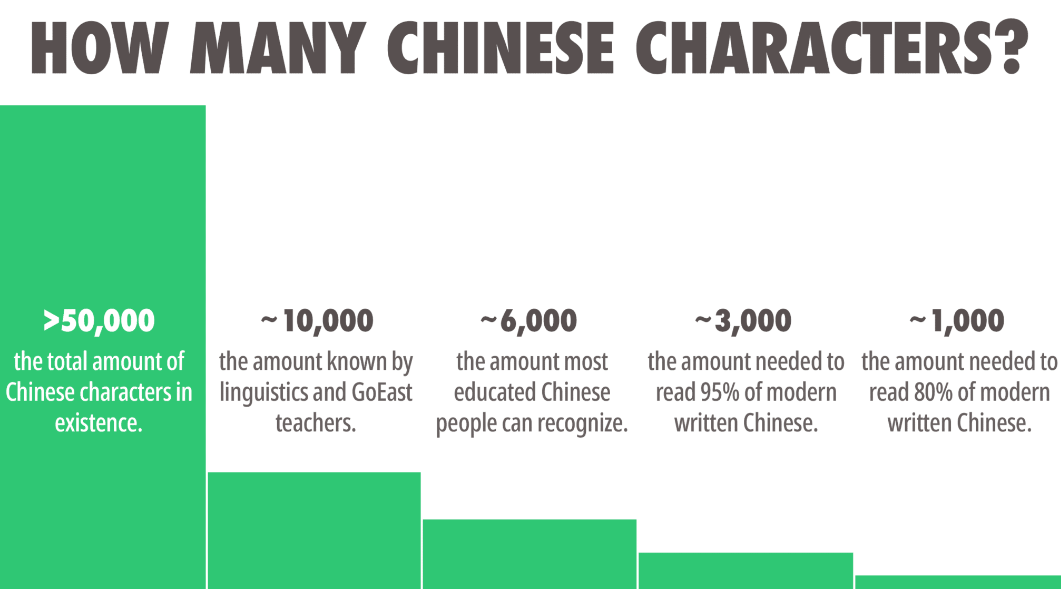
#1. Official Character Counts:
| 1 | The official list of commonly used Mandarin characters, known as the “General Standard Chinese Characters” (GB2312), includes around 6,763 existing characters. |
| 2 | The “Table of General Standard Chinese Characters” (GB7589-87) expands this to 7,652 characters. The “List of Common Characters for Use in Government” (GB/T 2052-2012) contains 3,500 to 5,000 |
| 3 | characters considered most essential for everyday use. |
#2. Comprehensive Dictionaries:
| 1 | The authoritative “Hanyu Da Cidian” (Chinese Dictionary) contains over 370,000 entries, including many rare and historical characters. |
| 2 | The “Zhonghua Zihai” dictionary includes more than 85,000 unique Chinese characters. |
#3. Practical Character Knowledge:
| 1 | For functional literacy in modern Chinese, knowing around 2,000 to 3,000 characters is generally considered sufficient to understand most written materials. |
| 2 | Advanced users and scholars may know 3,000 to 5,000 characters, which allows comprehension of more specialized or classical Chinese texts. |
#4. Estimates and Variations:
| 1 | Estimates of the total number of Chinese characters in use range from tens of thousands to over 100,000, depending on the criteria and sources used. |
| 2 | The number of characters can vary across different regions, time periods, and specialized domains within the Chinese language. |
In summary, while the total number of existing modern Chinese characters is very large, the core set of commonly used characters in modern Chinese is generally considered to be in the range of 3,000 to 7,000 characters, with 2,000 to 3,000 characters being sufficient for practical literacy purposes.
Part 3. Composition of the Chinese Mandarin Character
Mandarin characters are intricate and layered, combining radicals, phonetics, and structural forms along with specific strokes to create a rich Chinese writing system.
These components can include radicals, which are recurring character elements that convey semantic meaning, as well as phonetics, which indicate the character’s pronunciation. The overall structural form of the character, including the arrangement and number of strokes, also contributes to its visual identity and memorability.
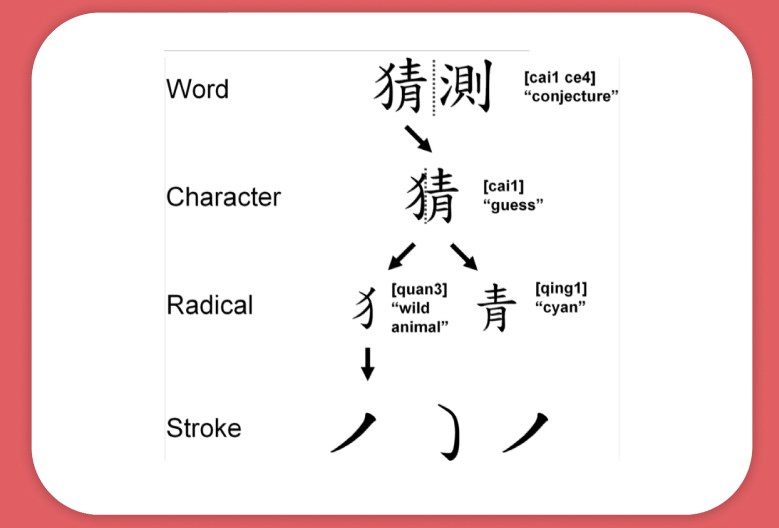
Here is the basic composition of Chinese characters.
| Composition | Definition | Example |
| Radicals | The building blocks of characters typically indicate some aspect of the meaning. | The radical “氵” (water) appears in characters like “河” (river) and “海” (sea). |
| Phonetics | Many characters include a phonetic element that hints at their pronunciation. | In the character “妈” (mā), the component “马” (mǎ) suggests how to pronounce it. |
| Structure | Characters can be simple, consisting of a single radical (e.g., “口” for “mouth”) or more complex, combining multiple components. Most characters are formed from a combination of a radical and a phonetic element. | Single-component characters: Characters that consist of a single radical. “山” (mountain). |
| Two-component characters: Characters made up of a radical and a phonetic.”明” (bright) combines “日” (sun) and “月” (moon). | ||
| Strokes | Each character is defined by a specific number of strokes, which are the individual lines that form it. | “汉” (Han) has 6 strokes. |
| Meaning | Characters can represent meanings that are sometimes abstract and do not directly relate to their components. | “心” (heart) denotes feelings but does not literally convey what a heart is. |
The Chinese language, particularly Mandarin Chinese, is written using these logographic Chinese characters. Understanding the structure and evolution of the Chinese writing system is crucial for effectively learning and using the Chinese language and Chinese words.
Chinese Character Radicals
Radicals are the building blocks of Chinese characters. They can serve as semantic indicators, providing clues about the meaning of the Chinese words they are part of. Radicals help organize characters in dictionaries and provide hints about pronunciation or meaning. They are crucial for understanding character composition, especially for learners of the Chinese language.
Radicals can be categorized based on their meanings. Here are a few common examples. You can also check the “Basic 214 Common Chinese Characters Radicals List” to learn more about Chinese Character Radicals.
| Radical | Meaning | Example Characters | Meanings |
| 水 (shuǐ) | Water | 河 (hé) | River |
| 海 (hǎi) | Sea | ||
| 木 (mù) | Wood or Tree | 林 (lín) | Forest |
| 树 (shù) | Tree | ||
| 火 (huǒ) | Fire | 灭 (miè) | Extinguish |
| 烧 (shāo) | Burn | ||
| 女 (nǚ) | Female | 妈 (mā) | Mother |
| 姐 (jiě) | Sister |
Basic Chinese Strokes and Strokes Orders
In the context of Chinese characters, strokes refer to the individual marks or lines that are combined to form a character. Every Chinese character is formed from six basic, four combining, and 29 compound strokes. The six basic strokes include vertical and horizontal strokes, left and right sloping strokes, a single dot, and a diagonal tick. Understanding these strokes and their correct order is essential for writing characters accurately.
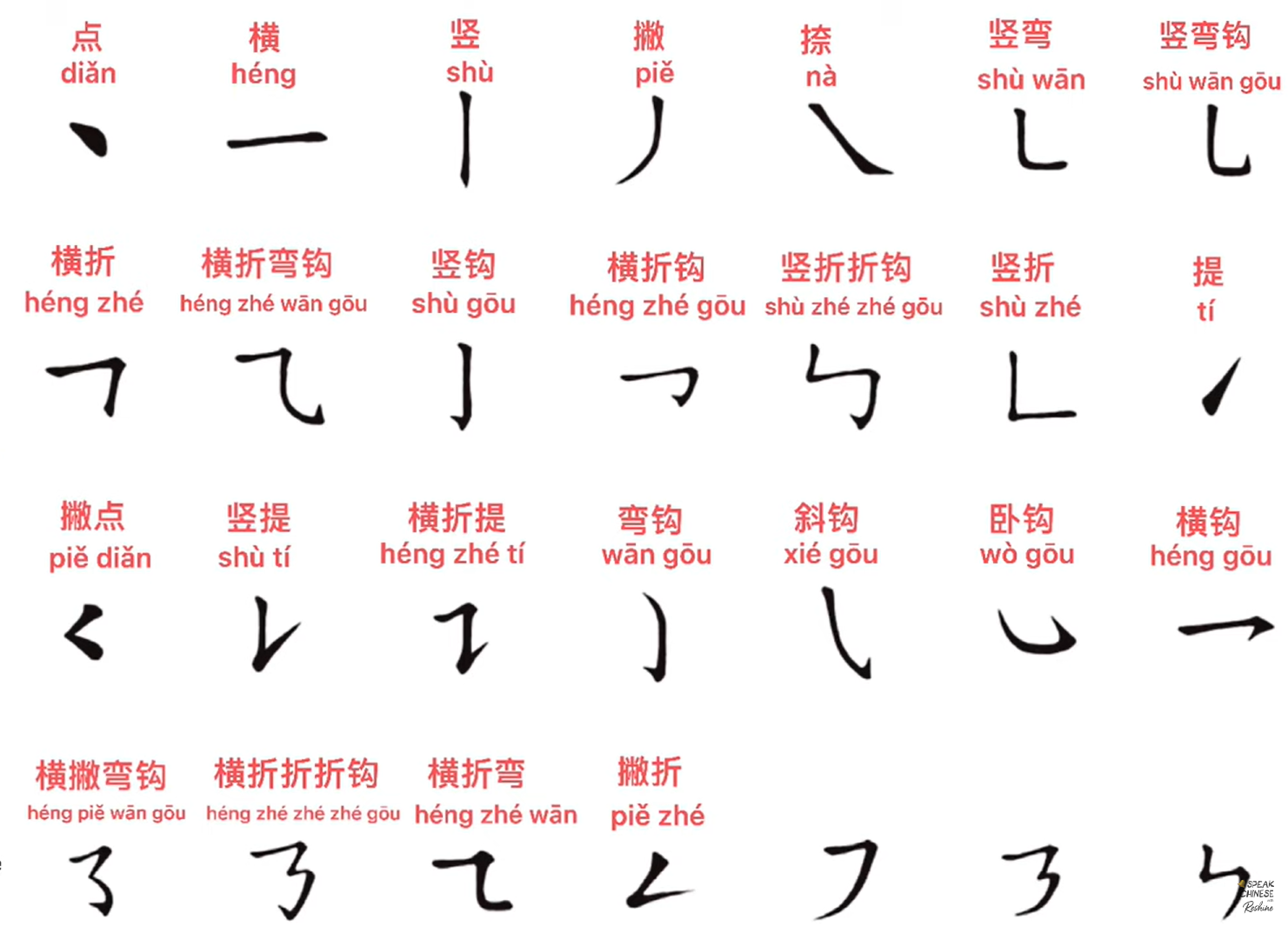
#1. Basic Chinese Strokes
| Basic Chinese Strokes | Pinyin | English Name | Description | Example Character | Meaning |
| 一 | 横 (héng) | Horizontal Stroke | A straight line drawn from left to right. | 一 | One |
| 丨 | 竖 (shù) | Vertical Stroke | A straight line drawn from top to bottom. | 亅 | Hook |
| ㇏ | 撇 (piě) | Left-Falling Stroke | A diagonal line that falls to the left. | 人 | Person |
| 丿 | 捺 (nà) | Right-Falling Stroke | A diagonal line that falls to the right. | 大 | Big |
| 丶 | 点 (diǎn) | Dot | A small dot made with a downward motion. | 田 | Field |
| ㇀ | 提 (tí) | Diagonal Tick | An upward stroke. | 小 | Small |
#2. Chinese Stroke Order Basics
Stroke order refers to the sequence in which the individual strokes of a Chinese character are written. We also provide you with a printable PDF to help you practice stroke orders.Here are the basic rules of stroke order:.
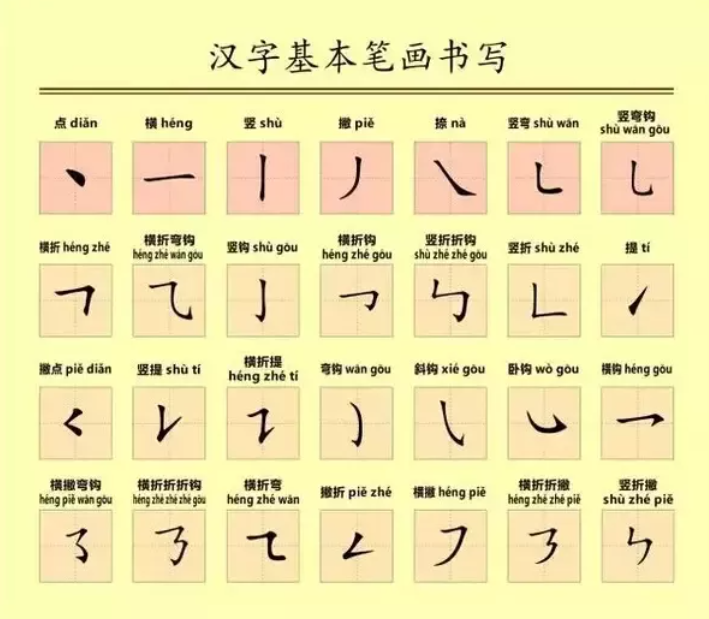
| Rule | Example Character | Pinyin | Stroke Order |
| From Top to Bottom | 三 | sān | 一、一、一 |
| From Left to Right | 林 | lín | 木、木 |
| Horizontal Before Vertical | 十 | shí | 一、丨 |
| Picking Stroke Before Hook | 人 | rén | 丿、㇏ |
| From Outside to Inside | 问 | wèn | 门、口 |
| Middle Before Sides | 水 | shuǐ | 冂、丿、丶、丶 |
| Main Stroke Before Secondary | 王 | wáng | 一、一、丨、一 |
| Outside Before Inside | 回 | huí | 冂、冂 |
| Point Last | 主 | zhǔ | 丿、丨、一、丶 |
| Horizontal-Fold-Hook in Order | 几 | jǐ | 一、㇀、㇁ |
| Top-Bottom Structure, Top First | 苗 | miáo | 艹、田 |
| Left-Right Structure, Left First | 明 | míng | 日、月 |
| Enclosing Structure, Outside First | 国 | guó | 囗、玉 |
| Semi-Enclosing Structure, Outside First | 包 | bāo | 勹、口 |
| Fully Enclosing Structure, Outside First | 因 | yīn | 囗、大 |
Structure of Chinese Character
Mandarin characters are composed of different elements that work together to convey meaning and pronunciation. Most of the characters consist of two components: phonetic component and a symbolic component. At the core of many characters are radicals, which often indicate the general category of meaning. For instance, the radical 水 (shuǐ), meaning “water,” appears in characters like 河 (hé), which means “river,” and 海 (hǎi), meaning “sea.”
In addition to radicals, many characters include phonetic components that suggest how the character is pronounced. A clear example is the character 妈 (mā), where the phonetic component 马 (mǎ) gives a hint about its pronunciation, while the symbolic component 女 (nǚ) indicates that it relates to “woman,” thus meaning “mother.”
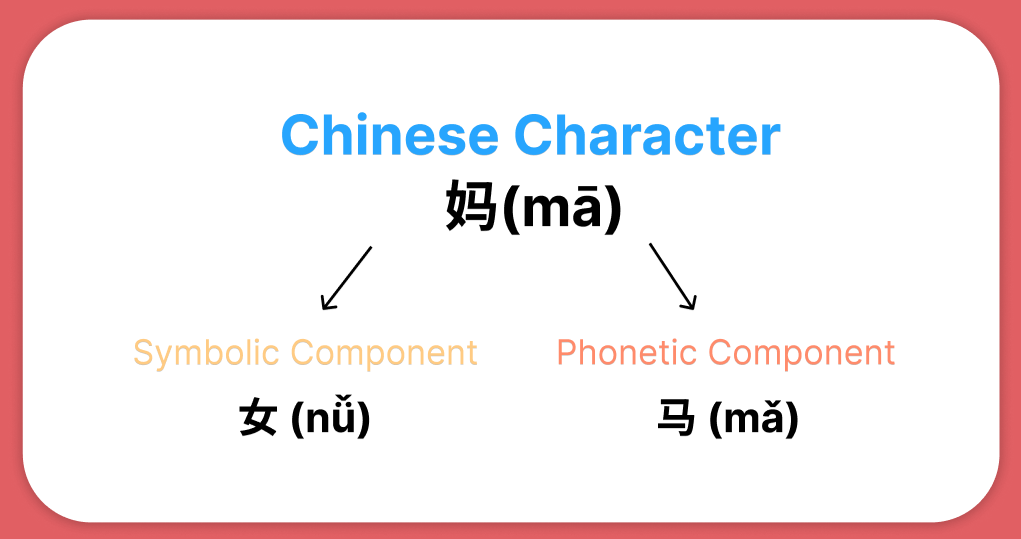
A large number of characters feature a blend of both symbolic and phonetic components. For example, the character 姐 (jiě) consists of the symbolic component 女 (meaning “female”) and the phonetic component 且 (qiě), which together convey the meaning of “big sister.” Some characters can be more complex, incorporating three components. An example is 聪 (cōng), where the symbolic component 耳 (ěr) relates to “ear,” while 宋 (sòng) serves as the phonetic element, portraying the meaning of “intelligent.”
Lastly, there are single-component characters that are simpler, made up of only one radical. Such characters include 口 (kǒu), meaning “mouth,” 大 (dà), meaning “big,” and 日 (rì), meaning “sun” or “day.” Together, these elements illustrate the intricate system behind the composition of Chinese characters, integrating visual symbols with phonetic cues.
Chinese Character Structure List PDF – Download for free
| Structure Types | Structure in Chinese | Description | Example Character |
| Whole | 独体字 | A single component representing a complete character. | 水 (shuǐ)、口 (kǒu)、山 (shān) |
| Left and Right | 左右结构 | Characters with components arranged side by side. | 明 (míng)、时” (shí) |
| Top-Bottom | 上下结构 | Characters composed of elements stacked vertically. | 竖 (shù)、思” (sī) |
| Left-Center-Right | 左中右结构 | Characters with a left component, a center component, and a right component. | 斑 (bān)、搬 (bān) |
| Top-Middle-Bottom | 上中下结构 | Characters with three sections stacked vertically. | 意 (yì)、喜 (xǐ) |
| Up-Right Surrounded | 右上包围结构 | Characters with an upper component and a right component. | 司 (sī) 、式 (shì)、包 (bāo)、句 (jù)、匈 (xiōng) |
| Surrounded (Left-Up) | 左上包围结构 | Characters with a left side surrounding the top. | 厌 (yàn)、病 (bìng) |
| Surrounded (Left-Down) | 左下包围结构 | Characters with a left side surrounding the bottom. | 过 (guò)、进 (jìn)、远 (yuǎn)、近 (jìn) |
| Surrounded (Left-Up-Right) | 上三包围结构 | Characters with a left component surrounding upper and right elements. | 同 (tóng) |
| Surrounded (Left-Right-Down) | 下三包围结构 | Characters with left and right components surrounding the bottom. | 幽 (yōu)、山 (shān) |
| Surrounded (Top-Left-Bottom) | 左三包围结构 | Characters with a top component encompassing left and bottom parts. | 区 (qū) |
| Overall Surrounded | 全包围结构 | Characters that are completely enclosed by a surrounding component. | 固 (gù)、园 (yuán) |
Part 4. Common Chinese Characters (With Free PDF)
Common Chinese characters are the building blocks of the Chinese language, each carrying its own meaning. Understanding these characters allows learners to form basic vocabulary, read simple sentences, and communicate effectively. These characters often represent fundamental concepts or emotions, making them essential for both language acquisition and cultural appreciation.
| Common Chinese Characters List: Download Free PDF |
| Radicals of Chinese Characters List: Download Free PDF |
Most Common Chinese Characters
| Character | Pinyin | Meaning |
|---|---|---|
| 的 | de | Structural particle |
| 是 | shì | The verb “to be” |
| 我 | wǒ | The pronoun “I” or “me” |
| 在 | zài | The preposition “at” or “in” |
| 不 | bù | The negative particle “not” |
| 有 | yǒu | The verb “to have” or “to exist” |
| 人 | rén | The character for “person” or “people” |
| 这 | zhè | The demonstrative pronoun “this” |
| 来 | lái | The verb “to come” |
| 上 | shàng | The preposition “on” or “above” |
| 下 | xià | The preposition “under” or “below” |
| 大 | dà | The adjective “big” or “large” |
| 小 | xiǎo | The adjective “small” or “little” |
| 好 | hǎo | The adjective “good” or “fine” |
| 天 | tiān | The character for “sky” or “day” |
Chinese Character for Love

| Character | Pinyin | Meaning | Usage Example |
| 爱 | ài | Love | 我爱你。 (Wǒ ài nǐ.) – I love you. |
| 恋 | liàn | Romance | 我们在恋爱。 (Wǒmen zài liàn’ài.) – We are in love. |
| 情 | qíng | Emotion/Feelings | 我有很多感情。 (Wǒ yǒu hěn duō gǎnqíng.) – I have many feelings. |
| 喜欢 | xǐhuān | Like/Enjoy | 我喜欢她。 (Wǒ xǐhuān tā.) – I like her. |
| 亲 | qīn | Affectionate | 他是我的亲人。 (Tā shì wǒ de qīnrén.) – He is my relative. |
Chinese Character for Peace

| Character | Pinyin | Meaning | Usage Example |
| 平 | píng | Peace | 祝你平安。 (Zhù nǐ píng’ān.) – Wishing you peace. |
| 和 | hé | Harmony | 和平是重要的。 (Hépíng shì zhòngyào de.) – Peace is important. |
| 安 | ān | Safe/Peaceful | 这里很安静。 (Zhèlǐ hěn ānjìng.) – It’s very peaceful here. |
| 宁 | níng | Tranquility | 请保持宁静。 (Qǐng bǎochí níngjìng.) – Please remain quiet. |
| 祥 | xiáng | Auspicious | 祝你祥和。 (Zhù nǐ xiánghé.) – Wishing you auspicious peace. |
Chinese Character for Strength

| Character | Pinyin | Meaning | Usage Example |
| 强 | qiáng | Strong | 她很强壮。 (Tā hěn qiángzhuàng.) – She is very strong. |
| 劲 | jìng | Force/Power | 他用尽全力。 (Tā yòng jìn quán lì.) – He used all his strength. |
| 雄 | xióng | Heroic | 他是一位英雄。 (Tā shì yī wèi yīngxióng.) – He is a hero. |
| 笃 | dǔ | Steadfast | 他非常笃定。 (Tā fēicháng dǔdìng.) – He is very steadfast. |
| 坚 | jiān | Firm/Solid | 她的意志很坚强。 (Tā de yìzhì hěn jiānqiáng.) – Her will is very strong. |
| 力 | lì | Strength | 他有很强的力量。 (Tā yǒu hěn qiáng de lìliàng.) – He has a lot of strength. |
Four Character Idioms about Dragon

| Idiom | Pinyin | Meaning | Usage Example |
| 龙飞凤舞 | lóng fēi fèng wǔ | A scene of great liveliness and enthusiasm | 他们的表演真是龙飞凤舞,令人难忘。 (Tāmen de biǎoyǎn zhēn shì lóng fēi fèng wǔ, lìng rén nánwàng.) – Their performance was truly lively and unforgettable. |
| 龙马精神 | lóng mǎ jīng shén | The spirit of a dragon and horse; energy and vigor | 他总是充满龙马精神,努力工作。 (Tā zǒng shì chōngmǎn lóng mǎ jīngshén, nǔlì gōngzuò.) – He is always full of energy and works hard. |
| 画龙点睛 | huà lóng diǎn jīng | To add the finishing touch | 他的评论给这一作品画龙点睛。 (Tā de pínglùn gěi zhè yī zuòpǐn huà lóng diǎn jīng.) – His comments added the finishing touch to the work. |
| 龙争虎斗 | lóng zhēng hǔ dòu | A fierce struggle or competition | 这场比赛真是龙争虎斗,双方势均力敌。 (Zhè chǎng bǐsài zhēn shì lóng zhēng hǔ dòu, shuāngfāng shì jūn lìdí.) – This match is a fierce competition with both sides evenly matched. |
Part 5. Simplified vs Traditional Chinese Characters
Chinese writing has a rich history, and its characters have evolved over millennia. To enhance literacy and modernize the language, two distinct forms of characters emerged: Simplified Chinese and Traditional Chinese. Understanding these forms is crucial for learners of the language, as they reflect different cultural and historical contexts.
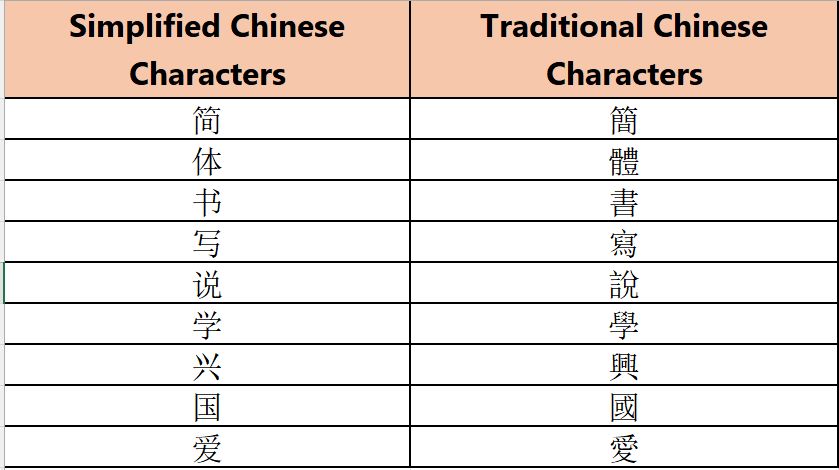
Simplified Chinese Characters
Simplified characters are a modernized version of Chinese writing, developed to reduce the complexity of traditional characters by decreasing the number of strokes and simplifying their forms.
| History | This system was officially introduced in the 1950s by the Chinese government to promote literacy among the population, especially in mainland China. |
| Usage | Simplified characters are primarily used in mainland China and Singapore, where they have become the standard for written communication. |
| Example | Character: 书 (shū) – Book (Simplified form) |
| Traditional Form | 書 |
Traditional Chinese Characters
Traditional characters retain the original complexity and strokes of the characters used before the simplification of modern Chinese characters.
| History | Ancient Chinese has been used for centuries and holds historical and cultural significance, maintaining the artistic aspects of the written language. |
| Usage | Traditional characters are mainly used in Taiwan, Hong Kong, and Macau, and are also prevalent in classical literature and scholarship. |
| Example | Character: 書 (shū) – Book (Traditional form) |
| Simplified Form | 书 |
Both simplified Chinese characters and traditional ones play important roles in the modern Chinese language. Their differences reflect not only linguistic choices but also cultural identities. Understanding these forms helps learners navigate the diverse landscape of Chinese writing.
| Differences | Simplified Chinese | Traditional Chinese |
| Stroke Count | Generally fewer strokes | Generally more strokes |
| Usage Regions | Mainland China, Singapore | Taiwan, Hong Kong, Macau |
| Complexity | Less complex structures | More intricate designs |
| Historical Context | Modernized for ease of learning | Preserved historical richness |
Part 6. Website to Learn Chinese Mandarin Characters
For Chinese language students, learning Chinese characters is an essential part of mastering the language, as they convey not only meaning but also the nuances of Chinese culture and history. With the right resources, this complex task can become much easier and more enjoyable. Below is a detailed overview of several websites, focusing on their unique learning content, skills enhancement, and standout features.
WuKong Chinese
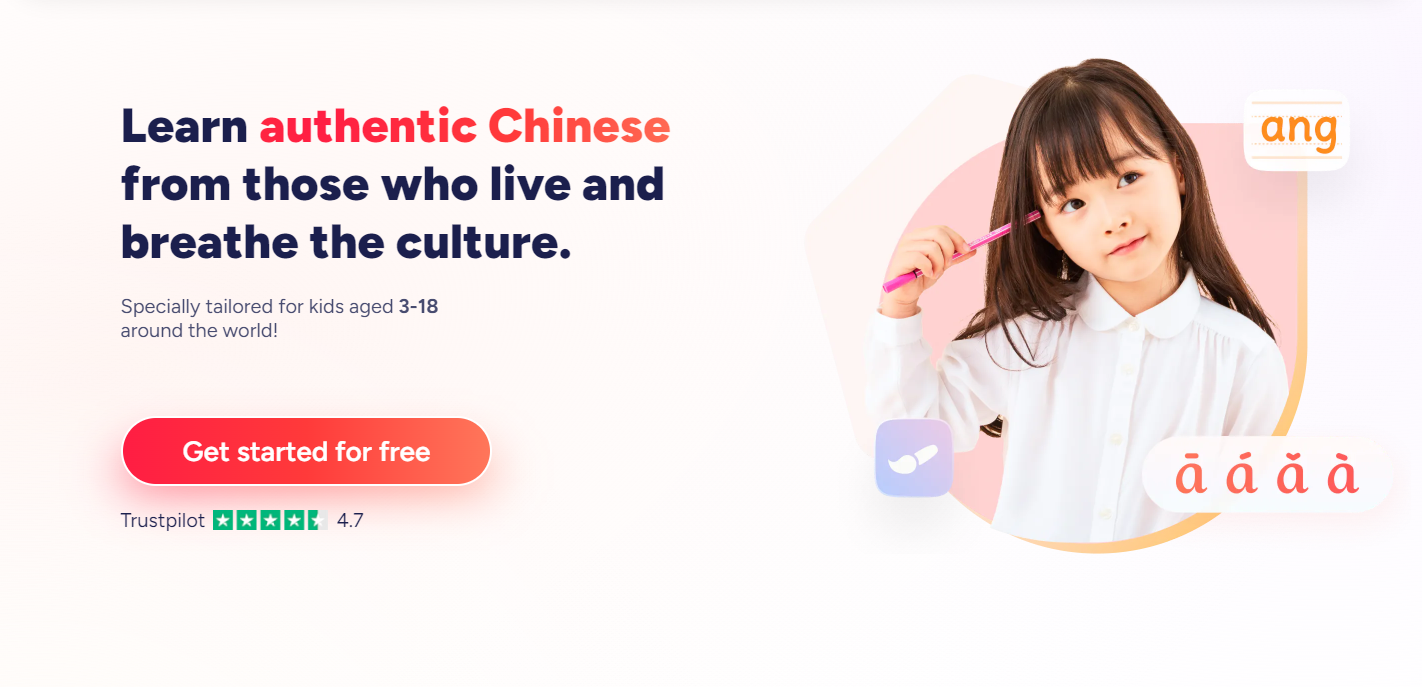
WuKong Chinese offers a dynamic and interactive platform specifically designed to support learners in mastering the Mandarin Chinese language, with experienced Chinese teachers. The platform includes lessons on character recognition, writing practice, and vocabulary building. Chinese learners can engage with multimedia resources, such as videos and interactive exercises, that explain the structure and meaning of characters.
Skills Enhancement: WuKong helps improve reading, writing, and spoken language skills through practical exercises that simulate real-life situations. The character learning section is particularly effective, using stroke order animations to guide users in correct writing techniques, which can help users aged 3–18 learn Chinese characters and improve Chinese vocabulary effectively.
Standout Features: The platform emphasizes cultural insights alongside Mandarin Chinese language learning, allowing students to understand the context in which characters are used and tell the difference between the same character. Additionally, community support through forums and groups fosters collaboration and motivation among learners.
Learn authentic Chinese from those who live and breathe the culture.
Specially tailored for kids aged 3-18 around the world!
Get started free!Skritter
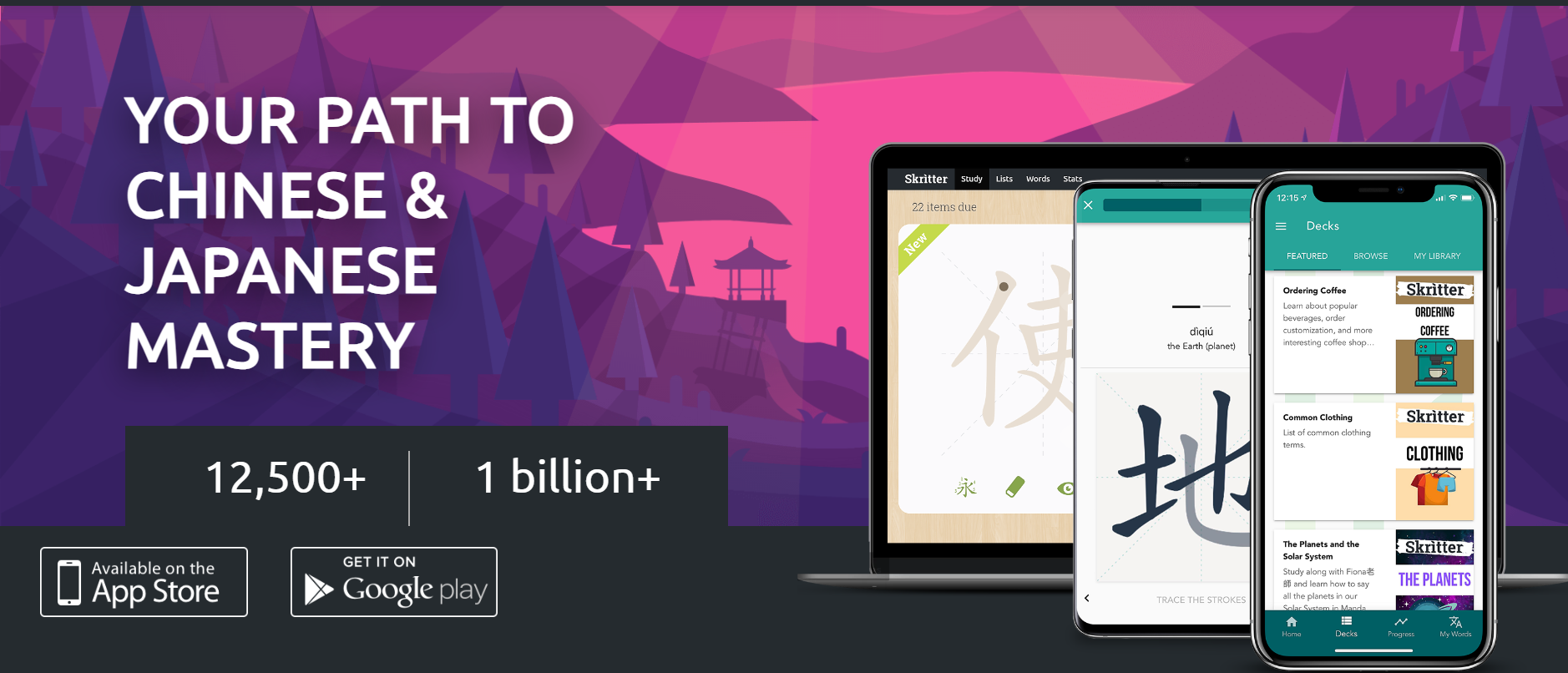
Skritter focuses on helping users learn how to write Chinese characters through a unique, interactive writing interface. By emphasizing writing practice, it integrates spaced repetition to enhance recall.
Skritter offers character writing practice with stroke-order animations and a vast library of Chinese vocabulary. Users can learn through engaging exercises that require them to write characters on a touchscreen or mouse.
| Skills Enhancement | By practicing writing characters repeatedly in a spaced-out schedule, learners reinforce their memory and increase retention. The app also provides immediate feedback on writing, which helps users identify areas for improvement. |
| Standout Features | The integration of gamification elements, such as scoring and streaks, keeps learners motivated. Skritter’s emphasis on personalized learning paths allows students to focus on the characters and vocabulary that are most relevant to them. |
HanziCraft

HanziCraft is an interactive tool aimed at breaking down Chinese characters into simpler components and radicals. This approach demystifies characters and helps learners understand their structure and meanings.
Chinese learner can search for characters and see their breakdown into radicals and components, which aids in memorization. The site also provides example sentences to illustrate how each character is used in context.
| Skills Enhancement | By focusing on radicals, learners can improve their ability to recognize and understand new characters based on their components. This skill is crucial for building a strong foundation in reading and writing. |
| Standout Features | HanziCraft allows users to generate custom flashcards and quizzes, providing supplementary practice tailored to individual learning needs. The visual breakdown of characters makes it an excellent resource for visual learners. |
Arch Chinese

Arch Chinese offers a comprehensive suite of resources for learning to write and understand Chinese characters. It is designed to support both students and teachers with its structured lessons and practice materials.
The website features detailed stroke order diagrams, worksheets for practice, and online quizzes to test knowledge. Each character includes explanations of its meaning and usage.
| Skills Enhancement | Arch Chinese emphasizes stroke order and writing technique, helping users develop correct handwriting skills. The variety of resources available ensures that learners can practice and reinforce their skills effectively. |
| Standout Features | The site offers printable worksheets and a wealth of resources for teachers, making it a great tool for classroom learning or individual study. The user-friendly interface makes navigating lessons straightforward. |
Pleco

Pleco is primarily known as a Chinese dictionary app, but it also offers comprehensive features for character learning that make it an invaluable resource for language students.
Pleco includes a vast database of characters, along with definitions, pronunciations, and example sentences. It also offers flashcard functionality for studying vocabulary.
| Skills Enhancement | The handwriting recognition feature is particularly beneficial, allowing users to practice writing characters by drawing them on their devices, which enhances learning through practice. |
| Standout Features | Pleco’s built-in OCR (optical character recognition) capability allows users to scan and translate text from books or signs in real-time. This feature not only helps with character recognition but also enriches the learning experience by connecting it to everyday situations. |
Part 7. How Do I Read and Write Chinese Mandarin Characters?
How to read Chinese characters:
The spoken language and the written Chinese language are interconnected, but have distinct systems and rules. While the Chinese characters represent the written form, mastering the Chinese spoken language is also crucial for full fluency and communication.
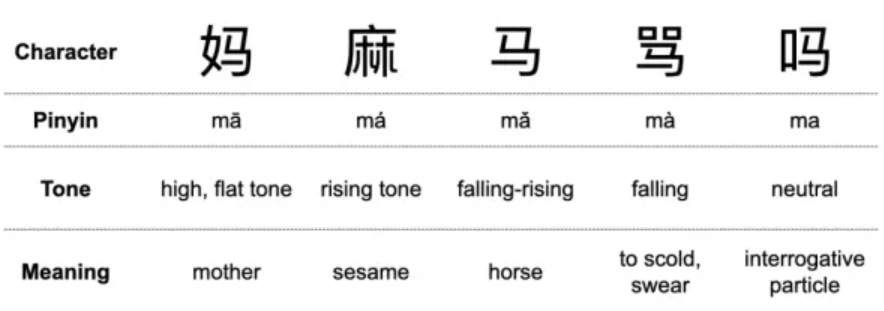
- Familiarize yourself with stroke order: Each character has a specific stroke order, which is important for proper pronunciation and writing.
- Learn Basic Radicals: Radicals are the building blocks of characters. Understanding common radicals can help you guess meanings and sounds.
- Use Context Clues: Many characters can change meaning depending on context. Pay attention to the surrounding Chinese words.
How do I write Chinese characters?
When practicing writing Chinese characters, it is important to pay close attention to the standard stroke order and sequences. This not only ensures the characters are formed correctly, but also facilitates faster and more legible Chinese text production.

In addition to practicing the physical act of writing, the use of flashcards and repetition can greatly aid in the memorization of Chinese characters and their associated meanings and pronunciations. This holistic approach to learning helps learners build a strong foundation in the Chinese writing system.
- Practice Drawing Characters: Start by practicing the stroke order on paper or using digital tools. Many apps offer stroke-order animations.
- Repetition: Writing each character multiple times helps reinforce memorization.
- Utilize Flashcards: Create flashcards with the character on one side and its meaning and pronunciation on the other.
FAQ about Chinese Characters
Q 1. How do you translate English to Chinese characters?
#1. Translating English to Traditional Chinese
a. Use Online Translation Tools: When converting English text into Chinese text, online translation tools can be a helpful resource. Websites like Google Translate or specific Chinese translation services can convert English text into traditional characters.

b. Check context: Some Chinese words may have multiple translations. Ensure you choose the correct one based on context.
#2. Translating Chinese Mandarin Characters to English:
a. Dictionary Resources: Use online dictionaries or apps (like Dictionary Written Chinese) that allow you to input Mandarin characters and receive the English translation.

b. Apps with OCR: Some apps can scan Chinese text and translate it into English instantly.
Q 2. What’s the connection between the Chinese alphabet and characters?

- Radicals and Phonetics: Unlike alphabets, Chinese characters are logographic, meaning each character represents a word or a meaningful part of a word rather than a sound. There is no “Chinese alphabet” like there is in languages such as English.
- Number of Characters: The Chinese writing system consists of thousands of unique characters, while most alphabets have a limited number of letters (e.g., the English alphabet has 26 letters).
- Pronunciation: Characters can have multiple pronunciations depending on context, whereas letters in an alphabet generally have a consistent sound.
Summary
Chinese characters are not just symbols; they embody the rich history and culture of the Chinese language. With estimates of over 50,000 characters, understanding their composition, common uses, and the difference between simplified and traditional characters is crucial for anyone interested in learning Chinese. By focusing on the basics, practicing writing, and utilizing available resources, you can embark on a rewarding journey into the world of Mandarin characters.
In addition, Wukong Chinese offers a variety of free and engaging Chinese character practice worksheets. Parents who are interested can download and print them online for their children’s practice.


My name is Kaia Bennett, and I graduated from Tianjin Foreign Studies University. With a strong background in education, parenting, economics, AI, sports, and health, I have dedicated my career to writing and sharing insights in these fields. Over the years, I have gained extensive experience as an English guest blogger, contributing to various platforms. Currently, I write for WuKong Education, where I focus on sharing learning experiences with a global audience of teenagers. My goal is to inspire and empower young minds through engaging and informative content.





![Math League: Competitions, Challenges, and Achievements [2025 Full Guide] Math League: Competitions, Challenges, and Achievements [2025 Full Guide]](https://wp-more.wukongedu.net/blog/wp-content/uploads/2024/01/school-2353406-520x293.jpg)

![Exploring the Square Root of 12 [Definition & Properties] Exploring the Square Root of 12 [Definition & Properties]](https://wp-more.wukongedu.net/blog/wp-content/uploads/2024/08/square-root-520x293.jpg)





Comments0
Comments